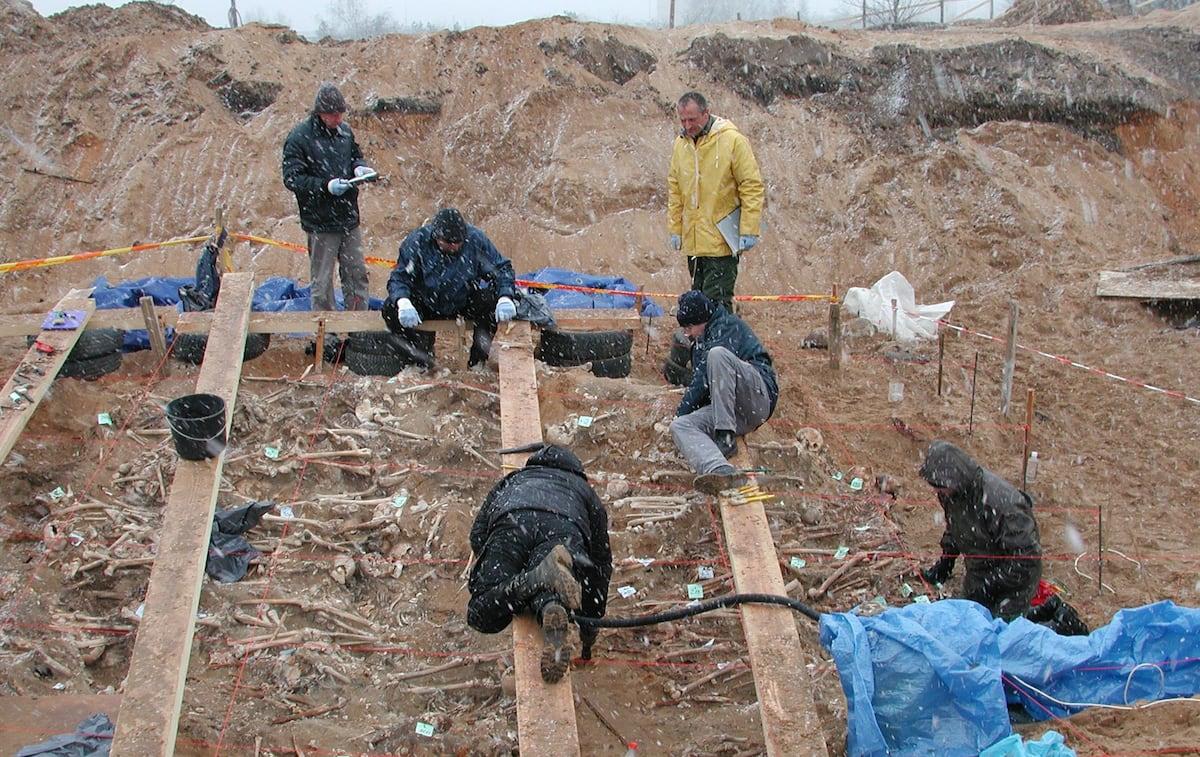According to the French troops, the DNA of the outbreak of the disease, the disease, the shaking group
Bacteria joined cold and hunger in the defeat of Napoleon's army in Russia
Timegen DNA Recovering French Soldiers' Teeth Shows How Disease Becomes Granderée
Bonaparte Bonaparte gathered a large army of about 600,000 men in the early summer of 1812 to attack Russia.The Grande Armae arrived in Moscow at the end of the summer, but it has only just been found.Isolation and lack of supplies forced the French to return to winter, in addition to the cold, in addition to the cold in the city.The retreat was a disaster for the emperor's army.Very low temperature and lack of food made the work of the Pathogens: about three hundred thousand soldiers died on the way.Now, the work selected by the researchers of the Instal Institute in the two circles of the rest of the Napoleonic soldiers.Under normal conditions they do not kill, but for those who are sad and do not touch everyone.
The first to enter Moscow was Dr. J. R. L. De Kirkhoff, doctor attached to the staff of the French Third Army Corps.For several years he wrote detailed information on the diseases he examined from the inside out of decorated soldiers.These included sprains, diarrhea, dysrrhea, dysentery, pneumonia or fasting. "At that time, I took a position at the top of this study, at the top of this study, because of the potential for microbial infections.
A team of experts led by Raskan recovered the remains of a Grande Armée soldier buried in Vilnius, Lithuania.They were the proof of Turchia, because the Kirkhofs, because the Kirkhofs are a disease that is a disease, they punish the Napoleks in their retreat.To find it, they are well-preserved in the record fossils: "If one of them is infected with blood pathogens, when they die, the bacterial DNA is stored in the blood, which contacts the dental pulp," explains Raskan.
They did not find the effects of typhus or any other disease mentioned by Dr.Kirckhoff.However, the teeth of four tested positive for the presence of Salmonella enteric paratyphi C, from the Salmonella group that causes paratyphoid fever.In the other two, the DNA of Borrelia recrentis, the bacteria responsible for the fever called relapse. Although these two diseases are different, they can cause similar symptoms, such as high fever, fatigue, and digestive problems.As with typhoid fever, the relapsing vector of the flu is a louse, a different species than the one seen on the heads of many school children every September.The etiology of paratyphoid fever is different; its source can be unsafe water, contaminated food or contact with faeces containing bacteria.
Under normal circumstances, none of these common diseases are fatal."But if you're on edge, if you're immunocompromised, you're starving, you're freezing to death, every little bug pushes you and you fall," says Raskovin.Although salmonellosis is very common due to food contamination, typhoid fever disappeared from Europe more than a century ago.After the work of Louis Pasteur and Robert Koch established the relationship between many microorganisms and diseases, certain hygiene and public health measures were sufficient to eliminate a significant portion of them.
"There are only seven sequenced genomes of the current strain of B. Recrentis. It is very difficult to find that there is only one study that has been isolated from several, all of them similar," says Rascovan."This disease is very difficult to find, and it is more common on the African continent, especially the Horn of Africa. This part of the world has been most affected by famine and war since the 1980s."Their sanitary conditions may have been similar to Europe at that time.ago ", concludes the scientist of the Pasteur Institute.
Just because they couldn't find the DNA of Rickettsia, the bacteria that causes typhus, doesn't mean that Kirkhoff's doctor was wrong in his diagnosis.Indeed, in 2006, after the excavation of the mass graves in Vilnius, the examination of the teeth of 35 soldiers (same grave, but different individuals) identified Rickettsia prowazekii DNA in three of them.In another seven, they found the Bartonella quintana sign, which causes the so-calledBoth bacteria use human body lice as a transmission vehicle.The authors of this paper also found several samples of the parasite among military uniforms.
Adding together the teeth analyzed in 2006 and the current ones, it turns out that a third of the samples contained some pathogen in the body.Although the authors are careful and do not extrapolate, if this percentage were applied not only to the nearly three thousand of those buried in Vilnius, but to the other three hundred thousand who left Moscow, but did not leave Russia alive, infectious diseases were among those who defeated Napoleon Bonaparte in the East, along with the so-called general winter and famine.
"During Napoleon's return from Moscow in the winter of 1812, the health and life conditions were completely over," recalls Remi Barbieri, the first author of the study, a doctoral student at the Pasteur Institute during his studies."The temperature dropped below -30 ° C, there was no food and shelter, and the tired soldiers walked hundreds of kilometers through snow and mud in worn, checkered uniforms," he adds.Barbieri, who discovered the history of the retreat.The combination of poor sanitation, hunger and extreme cold created an ideal breeding ground for disease."In such desperate situations, diseases transmitted by lice and water, such as typhus, relapsing fever, paratyphoid and water fever, spread quickly through the ranks," he explains."These many infections worked together to destroy an army already weakened by fatigue and hunger and turn the retreat from Moscow into one of the worst episodes in the history of the army," concludes Barbieri, now a researcher at the Institute of Genomics at the University of Tartu (Estonia).
For Francesco Maria Galassi, assistant professor of anthropology at the University of Łódź (Poland), Barbieri and Raskoven's work represents an important breakthrough: “Paleontological analysis helps us better understand the role of infectious diseases in major military campaigns such as Napoleon's.In fact, Galassi, who was not involved in the work, said that"Even todaylack of hygieneand infectionwhich is linked toHealth system collapse remains a key issue in current conflicts from the Middle East to Ukraine.”
Your payment is being used on another device
Want to add another user to your membership?
If you continue reading on this device, it cannot be read on another.
Arrowyour subscription is used on other devices and you can access El País on one device at a time.
If you want to share your account, change your subscription to premium mode so you can add another user.Everyone will sign in with their email account, allowing you to personalize your EL PAÍS experience.
Do you have a business subscription?Go here to sign up for more accounts.
If you don't know who is using your account, we recommend changing your password here.
If you decide to continue sharing your account, this message will appear indefinitely on your device and on the device of the other person using your account, affecting your reading experience.You can read the conditions of the digital subscription here.








